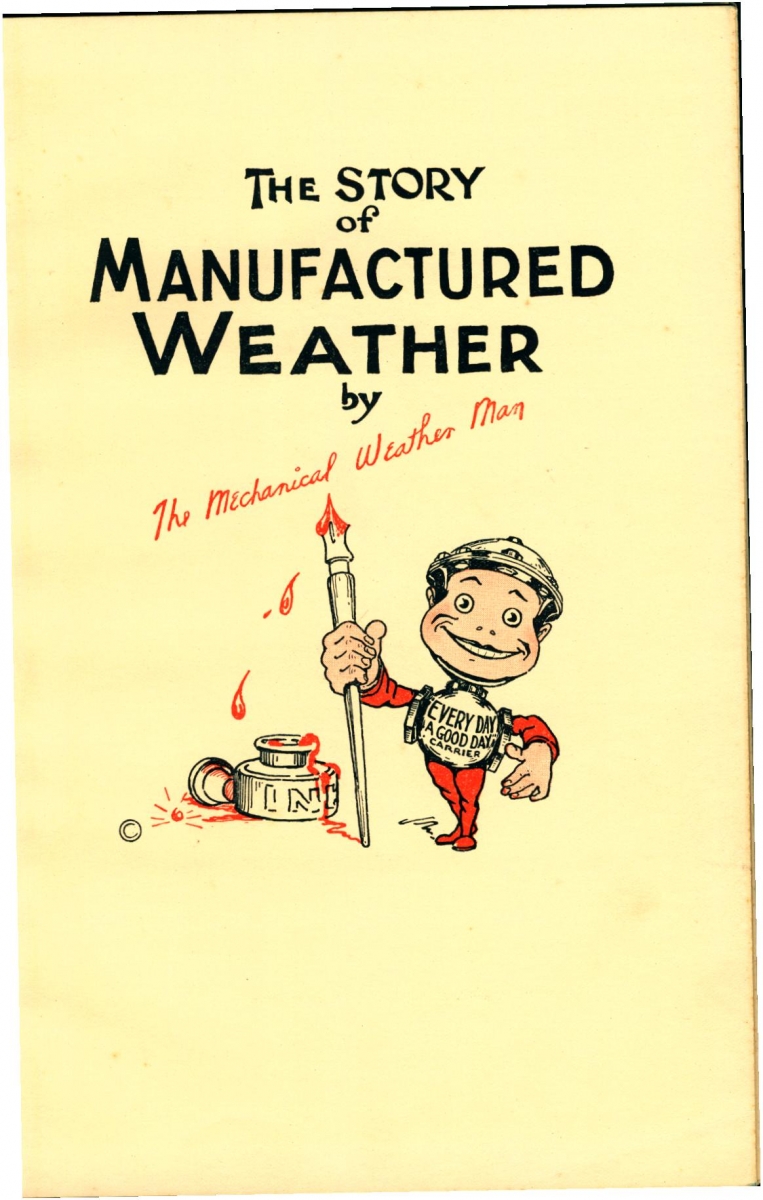As the temperatures started rising this summer, and I started cleaning the filters of our window air conditioners at home, I started thinking about the wonder of modern air conditioning. I searched the Hagley Library online catalog to see what information we have on air conditioning. As I expected, we have a lot!
While mechanical cooling methods were used as early as ancient Egypt, using evaporated water to cool, modern electrical air conditioning was not developed until the turn of the twentieth century.
The first modern electrical air conditioning unit was invented by Willis Carrier in Buffalo, New York. After graduating from Cornell University, the young engineer found a job at the Buffalo Forge Company, a manufacturer of heaters, blowers, and air exhaust systems. (The Hagley Library has 80 Buffalo Forge trade catalogs in its collection!)
Carrier was asked to find a solution for the Sackett-Wilhelms Lithographing and Publishing Company in Brooklyn, New York. The humidity in the plant was creating problems in the printing processes, causing poor printing quality, wasted materials, and lost production days.
Carrier experimented with replacing steam with cold water flowing through heating coils, balancing the temperature of the coil surface with the rate of air flow to pull the air temperature down to the desired dew point temperature.
On July 17, 1902, Willis Carrier submitted drawings for what was to be recognized as the world's first modern air conditioning system. The “Apparatus for Treating Air” was awarded U.S. Patent # 808897 in 1906.
Before air conditioning, manufacturing was very difficult in the heat when temperature and humidity fluctuated. Cotton threads broke, machines jammed, and food grew moldy. By filtering air and stabilizing temperature and humidity, mechanical systems improved the environment for products as well as workers. Carrier's technology was applied to increase productivity in the workplace.
The term "air conditioning" was coined in 1906, by Stuart W. Cramer of Charlotte, North Carolina, as he was exploring ways to add moisture to the air in his textile mill. He combined moisture with ventilation to "condition" and control the humidity necessary in textile plants.
Willis Carrier adopted the term, and by late 1907, Carrier was named to head a subsidiary of Buffalo Forge named Carrier Air Conditioning Company of America.
Hagley owns a pamphlet from the Carrier Air Conditioning Company from 1908, called “Carrier Air Washers and Humidifiers.” It states “The Standard Air Washer is designed to meet the severest conditions to be found in school buildings, court houses, office buildings, etc. It will perfectly cleanse the air at all times. In Winter it will maintain any percentage of humidity required up to 50 per cent in a building heated to 70 degrees. In Summer, while it will considerably cool the air it does not completely saturate it.”
By 1914 Carrier had designed and installed air conditioning systems for manufacturing plants, department stores, soap, rubber and tobacco factories, breweries, bakeries, and food processing plants.
Carrier left Buffalo Forge to form Carrier Engineering Corporation in 1915. Offices were established in New York City, Philadelphia, Boston and Chicago.

In 1919, Carrier wrote a book (with assistance from Carrier's President J. Irvine Lyle), The Story of Manufactured Weather, by “The Mechanical Weather Man” demonstrating the benefits of Carrier's modern air conditioning in dozens of industries. The book states that “Nearly two hundred distinctly different American Industries, from chewing gum to aeroplanes, have profited from that Idea. If nature can make a good day once in a while, we’ll manufacture weather and make ‘Every day a good day.’”
Linda Gross is the Reference Librarian in the Published Collections Department at Hagley Museum and Library.
